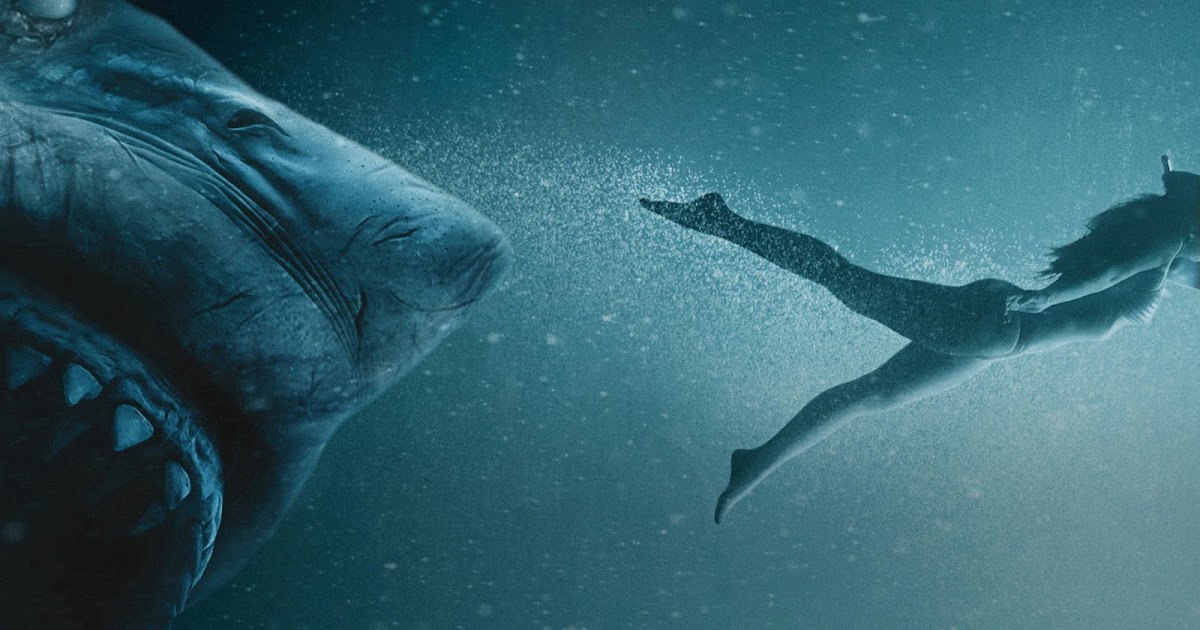Film Synopsis and Setting

“47 Meters Down,” a film that’s less about the breathtaking beauty of the ocean and more about the terrifying realization that you’re about to become a shark’s midnight snack, follows two sisters, Lisa and Kate, on a vacation in Mexico. Lisa, the more cautious of the two, is dragged into a cage diving experience by her thrill-seeking sister, Kate, who’s more interested in Instagram likes than marine biology. What begins as a slightly reckless tourist activity quickly transforms into a desperate fight for survival.
The film’s setting, the deep, dark, and unforgiving ocean, is a character in itself. The claustrophobic confines of the shark cage, the crushing pressure of the deep, the disorienting lack of visibility – all these elements contribute to a palpable sense of dread and isolation. The vibrant, sun-drenched beaches of Mexico are juxtaposed with the cold, inky blackness of the underwater world, creating a stark contrast that heightens the film’s suspense. The ocean’s vastness isn’t just a backdrop; it’s a menacing presence, a constant reminder of the sisters’ vulnerability.
Plot Points and Character Arcs, Review film 47 meters down
The plot unfolds with a series of escalating crises. The initial excitement of the shark encounter quickly gives way to terror when the cage’s cable snaps, plunging the sisters to the ocean floor. Their limited air supply, malfunctioning equipment, and the ever-present threat of sharks create a relentless pressure cooker of suspense. Lisa, initially hesitant about the dive, becomes the pragmatic leader, using her wits to devise escape plans. Kate, initially carefree, experiences a significant character arc, evolving from reckless abandon to a determined fight for survival. Their relationship, initially strained by their differing personalities, deepens under the pressure of their shared predicament. The film masterfully portrays their shifting dynamics as they grapple with their fear and dwindling hope.
Suspenseful Moments
The film’s most suspenseful moments are carefully crafted, building tension through a combination of visual and auditory cues. The initial cable snapping is a jarring, unexpected event that immediately throws the audience into the sisters’ desperate situation. The close encounters with sharks, particularly the extended sequences where they are surrounded by the predators, are excruciatingly tense. The dwindling air supply acts as a ticking clock, adding a layer of urgency to every decision. The complete darkness of the ocean depths, punctuated only by the occasional flash of their dive lights, creates a pervasive sense of unease. The sound design is also crucial; the creaking of the cage, the ominous thumps of unseen creatures, and the sisters’ panicked breathing all contribute to the overall atmosphere of dread. The final ascent, a race against time and dwindling oxygen, is a nail-biting climax that leaves the audience on the edge of their seats until the very end.
Technical Aspects of the Film: Review Film 47 Meters Down

47 Meters Down, while not aiming for cinematic masterpiece status, cleverly utilizes its technical aspects to ratchet up the tension and effectively immerse the viewer in the claustrophobic underwater setting. The film’s success lies not in groundbreaking visual effects, but in a masterful blend of cinematography, sound design, and editing that works surprisingly well within its budgetary constraints.
Cinematography and Emotional Impact
The cinematography of 47 Meters Down is crucial in establishing the film’s atmosphere of dread. The use of tight close-ups on the characters’ faces, particularly during moments of panic, amplifies their fear and vulnerability. Conversely, wide shots of the vast, dark ocean emphasize the insignificance of the characters against the overwhelming power of nature. The limited visibility underwater, often shrouded in murky darkness, heightens the sense of danger and uncertainty. The following table illustrates the interplay between shot type, camera angle, lighting, and the resulting emotional effect:
| Shot Type | Camera Angle | Lighting | Emotional Effect |
|---|---|---|---|
| Close-up | Eye-level | Dim, natural light filtering through water | Heightened anxiety, claustrophobia, intimacy with characters’ fear |
| Wide shot | Slightly elevated | Dark, almost pitch black | Overwhelming sense of isolation, vastness of the danger, insignificance of characters |
| Point-of-view shot | Subjective | Murky, limited visibility | Increased immersion, heightening the viewer’s sense of vulnerability and panic |
| Underwater shot | Low angle | Blueish, distorted | Disorientation, sense of unease, emphasizing the alien environment |
Sound Design and Suspense
The sound design in 47 Meters Down is arguably as important as the visuals. The constant, low-hum of the ocean, punctuated by the sharp clicks and snaps of unseen creatures, creates a pervasive sense of unease. The muffled sounds of the divers’ breathing apparatus and the creaking of their cage add to the feeling of confinement. The strategic use of silence, particularly in moments of anticipation before a shark attack, amplifies the tension. The score, predominantly featuring low, throbbing sounds, perfectly complements the overall auditory landscape of fear and impending doom. The combination of diegetic (realistic) and non-diegetic (added for effect) sounds works synergistically to build a relentless atmosphere of suspense.
Editing Techniques and Tension
The film’s editing techniques are crucial in maintaining the high-tension atmosphere. Rapid cuts during moments of action and danger create a sense of urgency and chaos. Conversely, slower, more deliberate cuts during quieter moments heighten the anticipation and build suspense before the next attack. The use of jump cuts, while not overused, is effective in startling the viewer and emphasizing the suddenness and unpredictability of the shark’s attacks. The editing skillfully manipulates the pacing of the film, creating a roller coaster of emotions that keeps the audience on the edge of their seats. For example, a long, drawn-out shot of the divers trapped in their cage, followed by a rapid succession of shots of the shark circling, creates a potent combination of dread and action.